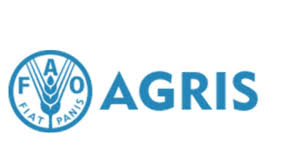PERFIL DOS PEPTÍDEOS BIOATIVOS OBTIDOS DE QUEIJOS DE COALHO COM POTENCIAL ANTIMICROBIANO
Resumo
Palavras-chave
Texto completo:
PDFReferências
AROURI, A., DATHE, M., BLUME, A. 2009. Peptide induced demixing in PG/PE lipid mixtures: A mechanism for the specificity of antimicrobial peptides towards bacterial membranes. Biochimica et Biophysica Acta, v. 1788, n. 3, p. 650 -659, 2009.
ARRUDA, M. S. et al. New peptides obtained by hydrolysis of caseins from bovine milk by protease extracted from the latex Jacaratia corumbensis. LWT - Food Science and Technology, v. 49, p. 73-79, 2012.
CAVALCANTE, J. F. M. et al. Processamento do queijo de Coalho regional empregando leite pasteurizado e cultura lática endógena. Ciência e Tecnologia dos Alimentos, v. 27, n. 1, p. 205-214, 2007.
EATON, T. J.; GASSON, M. J. Molecular screening of Enterococcus virulence determinants and potential for genetic exchange between food and medical isolates. Applied Environmental Microbiology, Norwich, United Kingdow, v. 67, n. 4, p. 1628-1635, 2001.
EGITO, A. S. et al. Método eletroforético rápido para a detecção da adulteração do leite caprino com leite bovino. Arquivo Brasileiro de Medicina Veterinária e Zootécnica, v. 58, n. 5, p. 932-939, 2006.
EXTERKATE F. A. et al. The selectivity of chymosin action on (S1)- and β-caseins in solution is modulated in cheese. International Dairy Journal v.7, n. 1, p. 47–54, 1997.
FELIGINI, M. et al. Identification and Quantification of αS1, αS2, β, and ҡ-Caseins in Water Buffalo Milk by Reverse Phase-High Performance Liquid Chromatography and Mass Spectrometry. Journal of Agricultural and Food Chemistry, v. 57, n. 7, p. 2988-2992, 2009.
FERRANTI, P. et al. Combined high resolution chromatographic techniques (FPLC and HPLC) and mass spectrometry-based identification of peptides and proteins in Grana Padano cheese. Dairy Science and Technology, v. 77, n. 6, p. 683-697, 1997.
FARKYE, N. Y.; FOX, P. F. Contribution of plasmin to cheddar cheese ripening: effect of added plasmin. Journal Dairy Research, Cork, Irish Republic, v. 59, n. 2, p. 209-216, 1992.
GAGNAIRE, V. et al. Peptides Identified during Emmental Cheese Ripening: Origin and Proteolytic Systems Involved. Journal of Agricultural and Food Chemistry, v. 49, n. 9, p. 4402-4413, 2001.
GÓMEZ-RUIZ, J. A.; RAMOS, M.; RECIO, I. Angiotensin-converting enzyme-inhibitory peptides in Manchego cheeses manufactured with different starter cultures. International Dairy Journal, Madrid, Spain, v. 12, p. 697-706, 2002.
HORNE D. S. Casein micelle structure: Models and muddles. Current Opinion in Colloid and Interface Science, Scotland, v.11, p. 48–153, 2006.
JAWETZ, E.; MELNICK, J. L.; ADELBERG, E. A.; BROOKS, G. F.; BUTEL, J. S.; ORNSTON, L. N. Patogenia da infecção bacteriana e resistência do hospedeiro à infecção. In: JAWETZ, E.,
KRÌGER, C. C. H. et al. Atividade antimicrobiana de peptídeos obtidos de caseína bovina. Alimentos e Nutrição, Araraquara, v. 17, n. 1, p. 7-12, 2006.
LAEMMLI, U. K. Cleavage of structural proteins during the assembly of head of bacteriophage T4. Nature, v. 227, n. 15, p. 380 - 685, 1970.
LIMA, M. S. F. et al. Queijo de Coalho artesanal: fonte alternativa de peptídeos antimicrobianos. Brazilian Journal of Food Technology, v. 20, p. 1-7, 2007.
LÓPEZ-EXPÓSITO, I. et al. Identification of antibacterial peptides from bovine kappacasein. Journal of Food Protection, v.69, n. 12, p. 2992–2997, 2006.
MELNICK, J. L., ADELBERG, E. A., BROOKS, G. F., BUTEL, J. S., & ORNSTON, L. N. (Eds.). Microbiologia Médica. Rio de Janeiro: Guanabara Koogan, 1991, p. 109-123.
MARQUES, D. P. et al. Separação das proteínas do soro do leite por DEAE-TRISACRYL. Alimentos e Nutrição, Araraquara, v. 16, n. 1, p. 17-20, 2005.
NATIONAL COMMITTE FOR CLINICAL LABORATORY STANDARDS – NCCLS. Methods for dilution antimicrobial susceptibility tests for bacteria that grow aerobically. Pennsylvania: NCCLS, 2003. p. 1887-1898. NCCLS document M7-A6.
NIELSEN, M. S. et al. Peptide profiles and angiotensin-I-converting enzyme inhibitory activity of fermented milk products: Effect of bacterial strain, fermentation pH, and storage time. International Dairy Journal, v.19, p. 155–165, 2009.
PAPPA, E. C. et al. Application of proteomic techniques to protein and peptide profiling of Teleme Cheese made from different types of milk. International Dairy Journal, v.18, p. 605-614, 2008.
PIRAINO P. et al. Use of mass spectrometry to characterize proteolysis in cheese. Food Chemistry v. 101, p. 964–972, 2006.
QUEIROGA, R. C. R. E. et al. Nutritional, textural and sensory properties of Coalho cheese made of goats’, cows’ milk and their mixture. LWT - Food Science and Technology, v. 50, p. 538-544, 2013.
SILVA, R. A. et al. Proteomic and peptidomic profiling of Brazilian artisanal ‘Coalho’ cheese. Journal Science Food Agriculture, 2016.
SILVA, R. A. et al. Can artesanal “Coalho” cheese from Northeastern Brazil be used as a functional food? Food Chemistry, v. 135, p. 1533-1538, 2012.
SILVA, S. V.; MALCATA, F. X. Caseins as source of bioactive peptides. International Dairy Journal, Porto, Portugual, v. 15, p. 1-15, 2005.
SMACCHI, E.; GOBBETTI, M. Bioactive peptides in dairy products: synthesis and interaction with proteolytic enzymes. Food Microbiology, Perugia, Italy, v.17, p. 129-141, 2000.
SOERYAPRANATA E. et al. Relationship between MALDI-TOF analysis of
DOI: https://doi.org/10.12661/pap.2019.001
Métricas do artigo
Metrics powered by PLOS ALM
Apontamentos
- Não há apontamentos.
Pesquisa Agropecuária Pernambucana
ISSN 0100-8501 (impresso)
ISSN 2446-8053 (online)
Instituto Agronômico de Pernambuco (IPA)
Av. General San Martin, 1371
Bongi, Recife, PE, CEP 50761-000
revista.pap@ipa.br

.png)

.png)


